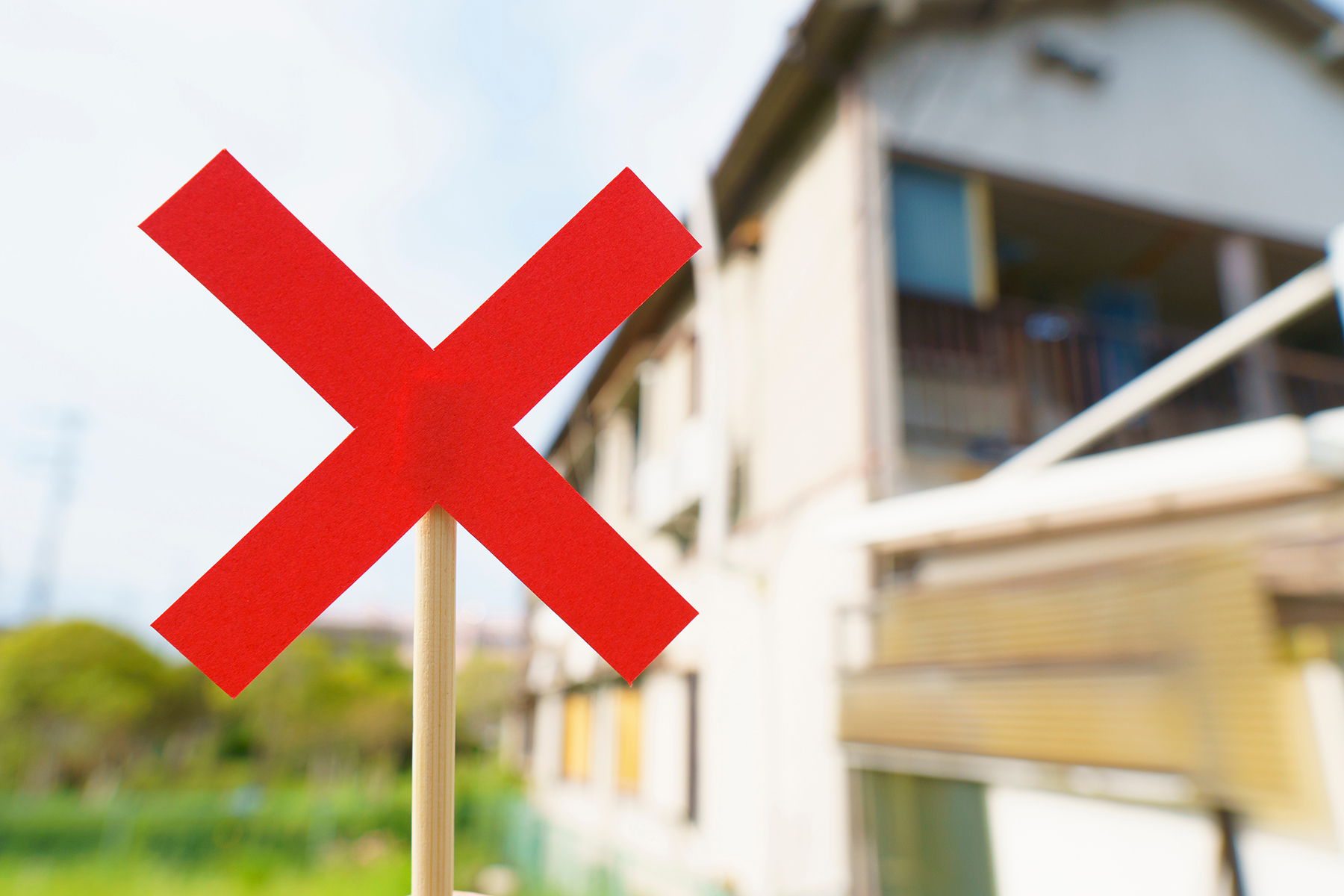Buying a home is a exciting, but it’s important to be aware of potential pitfalls that can turn your dream purchase into a nightmare. Knowing which red flags when buying a home can help you avoid buying the wrong property and ensure you don’t get stuck with hidden costs or annoyances down the line.
In this blog post, we will discuss some common warning signs to keep in mind when looking at potential homes so you can make sure you end up with the perfect place!
1. Foundation Failures
It is important for buyers to be aware of potential foundation issues before buying a home. Foundation failure can cause cracks in walls, floors, and ceilings as well as sticking doors or windows, and uneven or sunken floors.
Homeowners should inspect the perimeter of the house for any signs of settlement or heaving, visible cracks in foundations, walls or interiors, and plant growth around the foundation. If there is a basement, check for any water or moisture that could indicate poor drainage.
Additionally, inspect the roof for signs of sagging or leaks and look for any shingles that are damaged or missing. These are all red flags to be aware of when buying a home. It would be wise to hire an inspector who can identify and assess any issues. If there is a problem, buyers should consider the potential cost of repairs before proceeding with the purchase.
2. Bad Smells (Inside or Outside)
Bad odors can be a major red flag when home buying. Outside the home, bad smells could indicate problems such as sewage overflow from nearby properties or pollution from an industrial site. Inside the house, it could suggest issues like mold and mildew growth, pest infestations, or even pets that haven’t been properly looked after.
If you detect any strange or unpleasant odors, it’s a good idea to ask the seller about them and ensure that they are addressed before you commit to buying the home.
If any of these issues go unresolved, they could potentially become costly repair bills in the future. It’s also important to keep an eye out for musty smells inside the house, as this is often associated with water damage or asbestos, which can present major safety risks.
Ultimately, bad smells should always be taken seriously when looking for a home and to ensure that any underlying issues are fully addressed.
3. Locked Doors and Blockades
One of the most serious red flags to look for when buying a home is if there are any locked doors or blockades that deny access to certain parts of the house. This could be indicative of structural damage, water damage, pests infestation, and other hidden problems.
Before signing on the dotted line, make sure you have explored every inch of your new home and can verify that there are no such issues present. Additionally, inquire about any recent repairs or renovations to the property to get a better understanding of what may have been taken care of already.
4. Criminal Activity
If you find out that the home you’re interested in was previously owned by someone who had a history of criminal activity, it is likely wise to move on to a different property. Neighborhoods that have higher crime rates can also be an indicator of potential trouble down the line, so research the area and look for any signs of increased criminal activity that may require you to reconsider your decision.
5. High Utility Costs
Before signing on to purchase a new home, it’s important to inquire about the past utility costs of the property. If the past utility bills are consistently higher than normal, this could be a sign that something isn’t functioning correctly with the home. This could include inefficient insulation, old windows/doors, or even an issue with the HVAC system.
It is also important to note if there are any shady utilities costs in recent history as this can indicate potential misuse or fraud.
6. Water Stains
If you spot any water stains or evidence of previous water damage in the home, it could be a sign that something is wrong. This can be hard to detect at first glance, so make sure to look closely and ask questions about how recent the stains are and if there have been past water issues in the house.
It could signal structural damage like dry rot, mold, or foundation issues. It is important to have a professional inspect the house thoroughly to figure out exactly what needs to be done in order to protect your investment and safety.
Conclusion
Before buying a home, it is important to be aware of potential red flags when buying a home. Pay attention to signs such as water stains or damage, mold, old wiring, poor insulation and more. Make sure to have a professional inspect the house thoroughly so that you can make an informed decision about your purchase.
A good inspection may turn up costly repairs that could affect your budget or negative issues that would change your opinion of the house as a whole. Keep these red flags in mind before buying a home and you should be able to make an informed decision for yourself.
Contact Butler & Butler for all your Woodingville, Washington real estate needs or keep reading from 10 part series below.
- Financially preparing to buy a home including your credit score & a down payment.
- Choosing the right mortgage and getting pre-approved
- Needs vs Wants When Buying A Home
- Location, Location, Location – How to Decide Where to Buy a Home
- Finding the right real estate agent for you
- Red flags and things to know before you look at homes
- Viewing homes, open houses & home tours
- Making an offer, negotiations & and if someone else ofer gets accepted
- Escrow, home inspection & appraisal
- Closing & getting your keys


